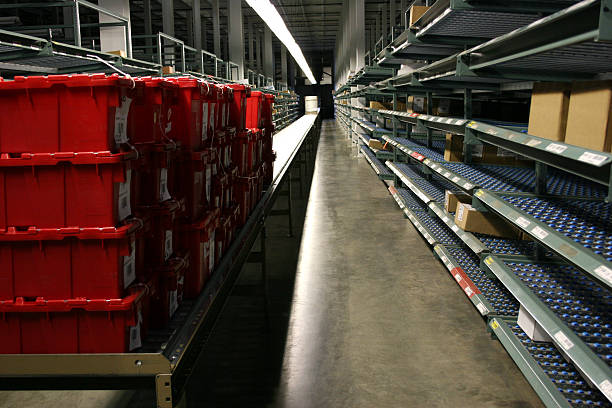Understanding ISO/IEC 18000-3
ISO/IEC 18000-3 is a critical international standard that specifies the parameters for communications between a Radio Frequency Identification (RFID) tag and a reader at 13.56 MHz, a frequency widely used in various industries. This standard is part of the broader ISO/IEC 18000 series, which defines RFID technology for item management.
Overview of ISO/IEC 18000 Series
The ISO/IEC 18000 series encompasses several parts, each addressing different frequencies and technologies used in RFID systems. These standards ensure interoperability and compatibility between products from different manufacturers. Part 3 of this series focuses on high-frequency (HF) RFID systems operating at 13.56 MHz, offering detailed guidelines on the physical and data link layers.
The Importance of ISO/IEC 18000-3
The ISO/IEC 18000-3 standard is crucial for industries relying on high-frequency RFID systems. This includes applications in supply chain management, inventory control, access control, and contactless payment systems. By providing a standardized framework, ISO/IEC 18000-3 enables seamless integration and communication between RFID tags and readers, ensuring efficient and reliable operations.
Key Features of ISO/IEC 18000-3
ISO/IEC 18000-3 defines two modes of operation: Mode 1 and Mode 2. Each mode has specific characteristics and is suited for different applications.
Mode 1: This mode utilizes amplitude shift keying (ASK) and is designed for applications requiring fast data rates. It supports both single and multiple tags, making it suitable for environments where rapid data exchange is essential.
Mode 2: Mode 2 employs a different modulation technique, frequency shift keying (FSK), offering robustness in environments with significant electromagnetic interference. This mode is ideal for applications where reliability is paramount, even in challenging conditions.
Physical Layer Specifications
The physical layer in ISO/IEC 18000-3 outlines the communication parameters between RFID tags and readers. This includes the frequency of operation (13.56 MHz), the power levels, and the modulation schemes. The standard ensures that tags and readers can communicate effectively, even in environments with multiple sources of radio frequency interference.
Data Link Layer Specifications
The data link layer focuses on the protocols for data exchange between tags and readers. It defines the methods for anti-collision, ensuring that multiple tags can be read simultaneously without data loss or corruption. The data link layer also specifies the commands and responses exchanged during communication, enabling efficient data transfer.
Interoperability and Compatibility
One of the primary goals of ISO/IEC 18000-3 is to ensure interoperability between products from different manufacturers. By adhering to the standard, manufacturers can develop RFID systems that work seamlessly with other compliant products. This interoperability is crucial for industries where different vendors' products are often used together.
Applications of ISO/IEC 18000-3
The high-frequency RFID systems defined by ISO/IEC 18000-3 are used in various applications across different industries. Some of the most common applications include:
Supply Chain Management: RFID technology is extensively used in supply chains to track and manage inventory. ISO/IEC 18000-3-compliant systems ensure accurate and real-time data exchange, improving inventory accuracy and reducing losses.
Access Control: High-frequency RFID systems are used in access control applications, such as building security and event management. The standardized communication ensures that access control systems are reliable and secure.
Contactless Payments: The standard is also crucial for contactless payment systems, where speed and reliability are essential. ISO/IEC 18000-3 provides the framework for secure and efficient transactions.
Asset Tracking: RFID technology is used to track valuable assets in various industries, including healthcare and manufacturing. The standard ensures that tracking systems are accurate and reliable, reducing the risk of asset loss.
Benefits of ISO/IEC 18000-3
Adhering to ISO/IEC 18000-3 offers several benefits for businesses and industries implementing RFID systems:
Interoperability: The standard ensures that products from different manufacturers can work together seamlessly, providing greater flexibility in system design and implementation.
Reliability: By following the standard, manufacturers can develop RFID systems that offer reliable performance, even in challenging environments with significant interference.
Scalability: ISO/IEC 18000-3 provides a scalable framework, allowing businesses to expand their RFID systems as needed without compatibility issues.
Cost-Effectiveness: Standardized systems reduce the cost of integration and maintenance, providing a cost-effective solution for businesses.
Challenges and Considerations
While ISO/IEC 18000-3 offers many benefits, there are also challenges and considerations to keep in mind:
Implementation Complexity: Implementing RFID systems can be complex, requiring careful planning and integration. Adhering to the standard helps mitigate some of these challenges, but expertise is still needed.
Interference: High-frequency RFID systems can be affected by electromagnetic interference. Ensuring proper shielding and mitigation strategies is essential for reliable performance.
Security: While the standard provides a framework for secure communication, additional security measures may be necessary to protect sensitive data in certain applications.
Future Developments
The field of RFID technology is continuously evolving, with ongoing research and development aimed at improving performance and expanding applications. Future updates to ISO/IEC 18000-3 may address emerging technologies and industry needs, ensuring the standard remains relevant and effective.
Conclusion
ISO/IEC 18000-3 is a vital standard for high-frequency RFID systems, providing a comprehensive framework for communication between tags and readers at 13.56 MHz. By ensuring interoperability, reliability, and scalability, the standard supports various applications across different industries. As RFID technology continues to evolve, ISO/IEC 18000-3 will remain a cornerstone for developing and implementing effective RFID systems.




